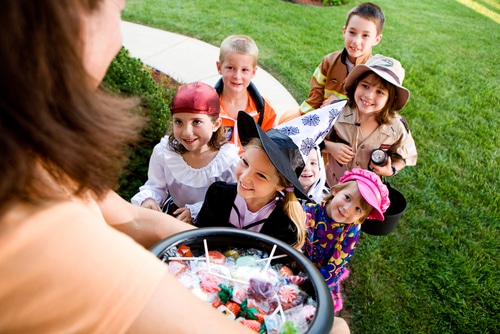
Three Reasons Child Injuries Are High on Halloween Night
For the Michigan families who will be celebrating Halloween this year, many are sure to be busy preparing costumes for a spooky-fun night Trick-or-Treating from the communities of Kalamazoo to Detroit. Sadly, one of the most fun night outs can also be considered one of the most dangerous for accidents involving children. The annual candy collecting celebration often creates a perfect storm of circumstances that pose a deadly danger to children, stemming from obstructed pedestrian views, drunk or distracted drivers, and serious trip and fall hazards. It is important for both parents and homeowners to recognize the dangers lurking from powered yard decorations, candlelit pumpkins, biting pets, or loose porch railings. A child who trips and falls may only scrape a knee, but what if the child hits his or her head or falls backwards onto the pavement from a higher platform like a porch? Blunt-force trauma can leave a child permanently disabled by a traumatic brain injury. It can even result in death.
Here are the three most common reasons why Michigan Trick-or-Treaters become victims of tragic accidents on Halloween night and several tips on what you can do to prevent them.
- Homeowner Negligence: Help keep your community and personal property safe for children and their families this Halloween by taking some time to clean up your home and yard. For example, clear a path in your yard and remove any obstructions or hazards. In addition, remove leaves, branches, potted plants, and hoses out of the yard and a safe distance from any walkways. Repair loose porch railings or stones that may pose a safety threat to your Halloween guests. Keep your driveway, porch entrance, or sidewalk well-lit to show the pathway to your door. Avoid lighting candles because they can pose a fire hazard, the National Fire Protection Association Choose to light pumpkins with battery operated lights or a string of lights around the front porch. And even the friendliest pet can bite, so keep Fido in a closed room away from disguised and excited Trick-or-Treaters.
- Tragic Pedestrian Accidents: Poorly-fitted or badly-designed costumes, as well as masks can already make it hard for kids to see sidewalk paths, but they also increase the odds a child will not see a vehicle approaching when they walk into the street. On Halloween night, children often forget about using crosswalks. This creates a serious pedestrian safety hazard. Parents should consider how visible their child’s costume is and add reflective tape, flashlights, or glow-in-the-dark items to increase the likelihood drivers will be able to see him or her. Warn your trick-or-treater about crossing from between two parked cars because, again, a driver in a motor vehicle may not ever see them. Drivers should take extra precaution for noticing these children during high traffic Trick-or-Treating times. Check your local news listings to know when heavy Trick-or-Treating hours will be in your community.
- Drunk Drivers: Adding to Halloween risks is the significant rise of drunk drivers who hit pedestrians walking on sidewalks, crossing streets, or waiting in a driveway. October 31st is well-known among Michigan police to have higher-than-average numbers of drunk driving accidents. Last Halloween, over half of all motor vehicle deaths were due to drunk drivers. Don’t drink and drive on Halloween or any other time of the year.
Our team at the Lee Steinberg Law Firm want you and your community to have a fun, happy and safe Halloween. Please share these messages with the people in your neighborhood who plan to welcome children onto their property to Trick-or-Treat, as well as family and friends planning a Halloween night out. If something goes wrong and an accident occurs, know that our experienced personal injury attorneys are always here to help: 1-800-LEE-FREE.

